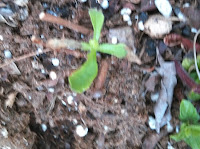Josh's friend April comes very close to my definition with: "Putting pieces together in a previously unexplored manner, whether art, literature, music, et al." Profound, but I must say more.
For me, creativity is a compulsion to raise things (words included) and/or concepts to a higher level and, in so doing, change and enhance their meaning: looking for the sow's ears that can be worked into silk purses. My late friend Kay was trained as a clinical psychologist, so she knew a compulsion when she saw it. She also had the empathy to say to me one time that she understood how creativity complicated my life.
On the other hand, Letty once said of herself (rather proudly I think): "I'm NOT creative!" This, on the way home from a Cub Scout event where we'd been doing crafts with the boys.
A while back I found myself pondering a cliché: "with all deliberate speed." It occurred to me that this legalistic phrase, made notorious as a sow's ear in the history of school desegregation, was a sort of paradox. By and by, my silk purse emerged as a short poem:
Physics
Speed
turns matter to energy
somewhere far away.
DeliberationIf you follow Joshua Frank Talbott's work, my speed and deliberation are sort of like his blue jay and dinosaur.
turns matter from noun to verb
producing energy I use today.
- - - -
*Facebook grabs your words away as soon as you hit enter, and this seriously cramps my style.

